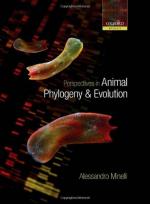|
This section contains 393 words (approx. 2 pages at 300 words per page) |
The term phylogenetic (or phyletic) is used in reference to relationships among groups of organisms based on their shared evolutionary history (that is, on their phylogeny). One of the major goals of biological science (and of paleontology, the study of extinct organisms) is to understand the phylogenetic relations among living and extinct species, as well among higher taxa (this term refers to any taxonomic group, such as species, genus, family, class, or phylum). Phylogenetic knowledge is crucial to understanding the evolutionary history of life on Earth, including that of our own species, Homo sapiens.
Phylogenetic relationships among taxa are examined using various kinds of data, including information on the comparative anatomy of fossil species (and of higher taxa), and the anatomy, biochemistry, behavior, and ecology of living organisms. Complex sets of data on these sorts of variables are analyzed using certain mathematical procedures (such as cluster analysis and ordination) to determine groups of taxa based on their similarity and dissimilarity. In such analyses, a basic assumption is that taxa that are similar in terms of character variables (i.e., in their anatomy, biochemistry, behavior, and/or ecology) are likely to be more closely related than taxa that are dissimilar. (However, it must be borne in mind that convergent evolution can result in non-related taxa having similar characters. In addition, homologous characters can evolve if closely related taxa are subject to different regimes of natural selection (i.e., a particular attribute may differ greatly between related taxa, as is the case of the wings of birds and the forelimbs of their reptilian ancestors.)
The phylogeny of some groups of organisms has been worked out rather well by paleontologists. For example, an early progenitor of the lineage of modern horses was Eohippus, a relatively small, four-toed animal that lived in the Eocene epoch about 55 million years ago. The somewhat larger, three-toed Mesohippus lived during the Oligocene epoch (about 35 million years ago), apparently having evolved from the Eohippus lineage. Next to occur in this phylogenetic series was the larger, three-toed Merychippus of the Miocene epoch (25 million years ago), followed by the bigger, one-toed Pliohippus of the Pliocene (5 million years ago). Finally, this phylogenetic lineage led to the evolution of the even larger, one-toed, modern horses, of which there are several species, including the horse (Equus caballus, donkey (E. asinus), and zebras (including E. zebra).
|
This section contains 393 words (approx. 2 pages at 300 words per page) |


